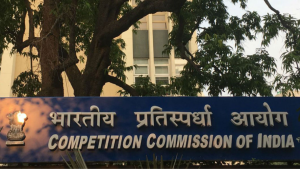

Administration of Justice – Understanding the Phrase (Part I)
Introduction
The phrase “administration of justice” is invoked in multiple contexts. The Contempt of Court Act allows the Supreme Court and the High Court to punish people for impairing administration of justice; media gag orders are issued in the interest of administration of justice; collegium resolutions for transferring judges are passed in the interest of administration of justice; judicial reforms are suggested for better administration of justice; and the constitution allows the state and the union governments to make laws for the administration of justice. Despite its ubiquitous influence in the legal system, there is no clear definition or understanding of the term ‘administration of justice’. There is little clarity on what are the contours of administration of justice – whether it is a judicial function concerned with adjudication, an organisational function concerned with managing the courts, or a mixture of both. It seems to be a generalised phrase invoked to obscure clarity.
This essay is the first in a series of blogs aimed at understanding how administration of justice has been understood in the Indian context. It looks at the different contexts in which the phrase has been used to understand what kind of function it refers to. The purpose is, in the words of Hart, “a sharpened awareness of words for a sharpened understanding of the phenomenon” with the hope this will enable us to appreciate the role of different organs of the state in reforming the administration of justice.
Different Uses
Law Commission
The fourteenth law commission was set up to suggest reforms in administration of justice. The law commission described their work as a comprehensive inquiry into our legal system. In defining its scope, it included four aspects – “(a) operation and effect of laws, substantive as well as procedural, with a view to eliminating unnecessary litigation, speeding op the disposal of cases and making justice less expensive; (b) the organisation of courts, both civil and criminal; (c) recruitment of the judiciary; and level of the bar and of legal education.” [2]1 It said that reforming administration of justice is concerned with ensuring efficient functioning of the court with least expenditure of time and resources for those that seek justice.In formulating their suggestions, the commission looked at the structure of the court, the adequacy of their composition, the jurisdiction of the courts, the reasons of delay as well as legal education and legal aid. Thus, whenever used in the context of reforms, administration of justice is meant to deal with organisational efficiency and not judicial adjudication.
Contempt of Court
Interestingly, the court often uses the expression administration of justice in contempt of court cases. Section 2(c) of the Contempt of Courts Act, 1971 allows the courts to punish for its contempt when the conduct of a person interferes or obstructs with administration of justice. In Baradakanta Mishra v Registrar of Orissa High Court [3],2 the Supreme Court made an inquiry into the meaning of the words ‘administration of justice’. Unlike the usage of the phrase in the law commission report that suggests administration of justice is concerned with questions of procedure – the structure of the courts, the process of appeals, execution of court orders and etc, the question in this case was whether administration of justice includes anything other than the judicial function, i.e., adjudication. Justice Palekar wrote that administration of justice is simply the work that constitutionally established courts do. It includes judicial administration as much as adjudication of disputes and is an integrated function of the judge. The administration of the court including appointment of court officials and the control over the work of the court officials in preparing writs, serving processes, maintaining records is to ensure people can secure justice. It includes the disciplinary power of the judge – her supervision over the work of the officers of the court as well as subordinate judges including their conduct and behaviour. The entire set up of the court and all powers exercised by a judge are for administration of justice. This case seems to add another dimension to our understanding of the phrase – it seems that administration of justice encompasses not only managerial or organisational function – it includes the entire gamut of function a judge performs, that includes controlling function, disciplinary function, appointment function and adjudication.
Constitution
The constitution uses administration of justice in Article 225 while discussing the jurisdiction of High Courts and in the concurrent list. In Article 225, the constitution lists the power of the judges with respect to administration of justice separately from the jurisdiction of the courts and the law of the court. It gives an inclusive list consisting of the power to make the rules of the court and regulate the sittings of the court. A reading of Article 225 seems to suggest that.
it again uses administration of justice to denote an organisational aspects concerned with manging the affairs of the court. While the courts have defined administration of justice as the works courts do, it is not a power limited to the judiciary. The concurrent list enables both the Parliament and the state legislatures to make laws on administration of justice. When interpreting this entry, the Supreme Court has held that it is a general provision allowing the provincial legislature to create new courts, determine its constitution, organisation and also confer it with jurisdiction and the power to hear and decide cases. [4] 3 Thus, administration of justice when viewed through the prism of legislative powers again reflects an organisational and managerial approach concerned with the structure and processes of the judicial system.
Conclusion
David Weissbrodt defines administration of justice as including the norms, institutions and frameworks by which states seek to achieve fairness and efficiency in dispensing justice. It includes principles of fair trial like presumption of innocence, independence of judiciary and right to a legal remedy. The analyses of the usage of the phrase in the three contexts Shows that administration of justice goes beyond it and includes questions of organisational efficiency. It seems to be a nebulous term encompassing anything and everything the court does. As used in the context of judicial reforms administration of justice was not adjudication of cases but management of the processes that make adjudication possible. Similarly, the legislative power on administration of justice is concerned with setting up of courts, designing its processes, conferring it with jurisdiction so that adjudication is possible. However, the courts’ usage of the phrase in contempt of court cases adds further breadth to it making adjudication an integral part of administration of justice. Administration of justice is not merely an organisational function. Thus, the words administration of justice are used more in the sense of delivery of justice as it includes the processes that make the delivery possible as well as the actual delivery in the form of judicial pronouncements. If the phrase is so broad as to include everything, one wonders whether the implication of its inclusion in the concurrent list. As mentioned before, the courts have said that this power allows the legislature to create courts, determine its composition and confer it with power. However, in popular understanding, this phrase is broader than mere creation of courts. The legislature being representative of people have in interest in the entire mechanism of administration of justice. If this is to be accepted, we need to understand what role the legislature has in reforming this mechanism
Endnotes:
[1] 14th Law Commission Report, Law Commission of India
[2] Baradakanta Mishra v Registrar of Orissa High Court (1974) 1 SCC 374
[3] State of Bombay v Narothamdas Jethabhai AIR 1951 SC 69
Debditya Saha is an intern with DAKSH.

Debditya Saha
RECENT ARTICLES


Testing the Waters: Pre-Implementation Evaluation of the 2024 CCI Combination Regulations

Not Quite Rocket Science

Administration of justice needs an Aspirational Gatishakti

-
Rule of Law ProjectRule of Law Project
-
Access to Justice SurveyAccess to Justice Survey
-
BlogBlog
-
Contact UsContact Us
-
Statistics and ReportsStatistics and Reports
© 2021 DAKSH India. All rights reserved
Powered by Oy Media Solutions
Designed by GGWP Design